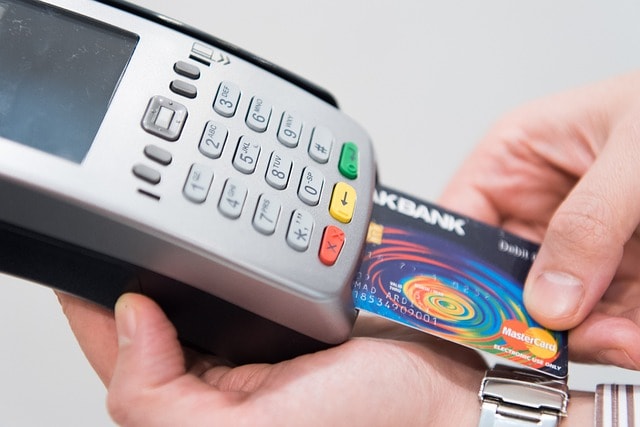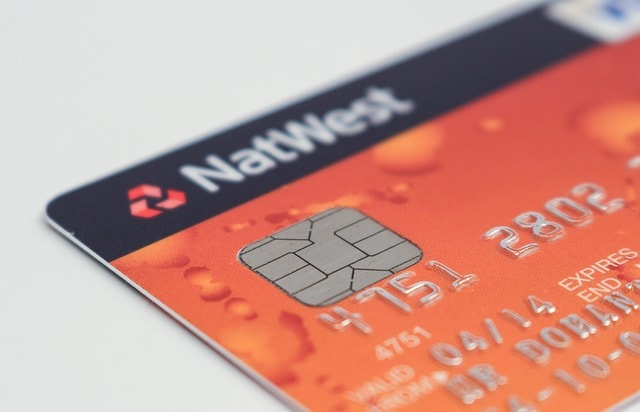The term ‘debit’ might appear straightforward, but its debit meaning carries significant weight across financial transactions and accounting practices. Simply put, a debit records a transaction that increases assets or expenses, or decreases liabilities. It affects everything from the way businesses track their spending to how you monitor your bank account after a debit card purchase. Our guide breaks down the basics of debits, how they intertwine with credits, and the nuances of debit transactions in everyday life. You’ll gain a clearer understanding of debit meaning without getting bogged down in jargon, readying you to navigate your finances with greater confidence.
Table of Contents
Key Takeaways
A debit entry in accounting typically indicates an increase in assets or expenses and a decrease in liabilities or equity, playing a crucial role in maintaining a company’s or an individual’s financial equilibrium.
Double-entry bookkeeping ensures that every transaction is recorded as both a debit and a credit to keep financial records balanced, with debits commonly reflecting the acquisition of assets or recognition of expenses.
Debit transactions affect real-world financial activities and are documented in bank registers and general ledgers, impacting account balances and highlighting the importance of monitoring for errors and unauthorized transactions.
Exploring the Fundamentals of Debit in Accounting

When it comes to financial accounting, ‘debit’ is more than just a term used in a transaction; it’s a fundamental concept that underpins the entire accounting process. A debit entry represents a transfer of value that generally signals an increase in assets or expenses, or a decrease in liabilities or equity. Think of it as the yin to the yang of credits in the financial universe.
The dual columns in traditional account books, with debits proudly occupying the left-hand side, stand testament to a system designed for balance and clarity. This system ensures that every debit has its counterpart, maintaining equilibrium in the world of bookkeeping.
The Origin of “Debit”
The word ‘debit’ itself has a storied past, tracing its lineage back to the 15th century. Derived from the Latin ‘debitum,’ it initially signified a debt or something owed. It was the venerable Luca Pacioli, an Italian mathematician, who first introduced ‘debit’ and ‘credit’ within the framework of financial accounting. In his seminal 1494 work, ‘Summa de Arithmetica,’ he laid the groundwork for what would become double entry bookkeeping, using these terms to reflect trust and obligation in transactions.
The abbreviation ‘DR,’ still ubiquitous in accounting ledgers today, hails from this Latin origin, serving as a bridge between ancient terminology and contemporary financial practice.
Debit as a Financial Term
Navigating the financial statements of a company, one encounters ‘debit’ as a beacon indicating an increase in assets or a decrease in liabilities. When a business acquires something of value or incurs a cost, it’s the debit entry that records this addition or reduction. Such entries make it crystal clear that a company has either bolstered its arsenal of resources or taken steps to settle its obligations.
For example, when a liability account like accounts payable is debited, it’s akin to chipping away at a mountain of debt, reflecting a business’s journey towards financial freedom. Similarly, when asset accounts such as cash and inventory bask in the glow of a debit entry, their value swells, showcasing the tangible growth of a company’s holdings.
Debit Transactions: How They Work and Why They Matter
Debit transactions are more than mere entries in a ledger; they are the heartbeat of commerce and personal finance. Each debit transaction signifies the acquisition of assets or the recognition of expenses, a financial manifestation of business operations or personal spending. It’s not just about the numbers; it’s about what those numbers represent – the new equipment that increases production efficiency, the stock that fills the shelves, or the marketing campaign that brings in customers.
In essence, they are the storytellers of economic activity, narrating where resources are allocated and how value is generated.
Debit Entries in Bookkeeping
Enter the world of double-entry bookkeeping, where every financial transaction is meticulously recorded twice – once as a debit and once as a credit. This methodical dance ensures that every penny is accounted for and that the financial records are in perfect harmony.
Debit entries, etched on the debit side of a debit account ledger, are the architects of this balance, reflecting increases in assets like cash or decreases in liabilities such as accounts payable. The decrease in accounts payable, for instance, is seamlessly matched by an equivalent debit increase in an asset or expense account, maintaining the equilibrium of a company’s financial ecosystem.
This careful choreography is vital, as it lays the groundwork for the total debits to match the total credits, ultimately ensuring the integrity of the company’s finances.
The Impact on Your Bank Account Register
The effects of bank debits ripple through your bank account register, each entry a snapshot of money in motion. When you make a purchase or cover an expense, your bank register reflects these transactions as debits, decreasing your available cash balance. It’s a financial tale told in real-time, with the debits in the register narrating the story of your spending habits, investments, and withdrawals.
Understanding the ebb and flow of these transactions provides insight into your financial health and helps you navigate the waters of personal finance with confidence.
The Interplay Between Debit and Credit

The dance of debits and credits in the grand ballroom of accounting is a performance that keeps the financial world spinning. In double-entry bookkeeping, every debit entry is elegantly paired with a credit entry, ensuring the accounts remain in harmony and reflective of the enduring accounting equation. This interplay is the cornerstone of a system designed to provide transparency and accountability, where debits and credits mirror each other’s moves, and the balance of the ledger is preserved.
It’s a delicate balance, where the increase in assets or expenses by debits is counterpoised by simultaneous decreases in equity, liability, or revenue accounts, and vice versa.
Maintaining Balance: Debits and Credits
The elegance of the accounting equation, ‘Assets = Liabilities + Equity,’ is maintained through the careful application of debits and credits. Each debit entry that augments assets or expenses is counterbalanced by a corresponding credit entry that adjusts liabilities or equity accounts, and vice versa. This meticulous pairing is non-negotiable, as the integrity of the double-entry accounting system rests on every debit having its credit counterpart.
The trial balance is the auditor’s tool of choice, summing up all debits and credits in the ledger to confirm that the books are indeed balanced. Even the slightest misstep is caught during this process, affirming that the company’s financial story is accurately told with no page left unturned.
Debit vs. Credit Card Accounts
The world of plastic paints a contrasting picture when comparing debit and credit card accounts. A debit card account typically showcases a debit balance, a reflection of the real-time deduction of funds from one’s account. Conversely, a credit card account is marked by a credit balance, a reminder of borrowed funds awaiting repayment.
In the eyes of a bank, the use of either card triggers a debit to the customer’s account, a subtle nod to the bank’s reduced liability towards the cardholder. This dichotomy between debit and credit cards is a valuable lesson in financial literacy, highlighting the difference between accessing existing funds and borrowing against future income.
Learn more, check out Debit Card vs. Credit Card: What’s the Difference?.
Types of Debit Cards and Their Uses
Debit cards, those handy tools of transaction, come in various forms, each with its unique features and uses. Here are some types of debit cards:
Check card: the ubiquitous debit card
EMV debit card: a security-enhanced debit card
ATM card: a card specifically for ATM transactions
Prepaid debit card: a versatile card that can be loaded with a specific amount of money
Instant virtual debit card: a tech-savvy card that can be used for online transactions
The spectrum of debit cards is broad and diverse.
These cards serve as a direct conduit to the user’s bank or credit union accounts, offering immediate access to funds for electronic payments. They differ from credit cards, not in their appearance, which often bears network logos like Visa or MasterCard, but in their function, debiting existing funds rather than drawing from a line of credit. Point of Sale transactions are a familiar setting for debit card use, where a simple swipe or tap translates into a direct deduction from the user’s bank account.
Prepaid Debit Card Dynamics
Prepaid debit cards present a unique twist in the debit card narrative, offering a financial lifeline to those without a traditional bank account. These cards allow users to:
Load funds and spend from that balance
Act as a budgeting tool and spending ceiling all in one
Safeguard against the all-too-common pitfall of overdrafts
The funds loaded onto the card represent the limit of what can be spent.
While these cards offer convenience, users must be vigilant about the various fees that can chip away at their balances. And in the event that temptation outstrips funds, transactions that exceed the balance on a prepaid debit card are simply declined, a stark reminder to spend within one’s means unless the card carries overdraft features.
Understanding Debit Card Fees
Navigating the waters of debit card fees requires a keen eye, as these fees can vary widely depending on the card and the user’s banking practices. Overdraft features on some debit cards can be a double-edged sword, offering the flexibility to exceed an account’s balance at the cost of potentially steep fees for each transaction that dips into the red. Users must tread carefully, familiarizing themselves with the specific fees associated with their debit cards, particularly prepaid ones, to avoid unwelcome surprises on their statements.
Additionally, the convenience of ATM withdrawals is not always free; cards lacking an extensive, fee-free ATM network could incur higher usage fees, a consideration that must be weighed against the benefits of card ownership.
When Debits Go Wrong: Errors and Corrections
Even the most vigilant of us can encounter discrepancies in our financial transactions, such as when a bank mistakenly debited an account. It’s why regularly reviewing account statements is a must, as it allows for the early detection of incorrect or unauthorized debits that could impact our finances. Should an anomaly arise, the established procedure is to reach out to the bank for clarification and, if necessary, dispute the transaction if it’s found to be in error. Banks are well-versed in handling such disputes, often providing provisional credit during the investigation and ultimately correcting the debit transaction upon confirmation of an error.
Protection for consumers against unauthorized debit transactions is enshrined in legislation such as the Electronic Fund Transfer Act, which ensures the right to a timely resolution.
Resolving Mistaken Debits
To set right mistaken debits, one must act swiftly, alerting the bank and presenting any evidence, such as the account statement, that supports the claim of an error. Timeliness is key; reporting unauthorized transactions within two business days can significantly limit one’s financial liability. Once a dispute is lodged, the bank springs into action, investigating the matter within a stipulated period, often ten business days, and providing provisional credit to the account holder’s relief. In cases involving foreign transactions or substitute checks, the investigation may take longer, but customers are afforded the right to request detailed reports or even an ‘expedited recredit’ under specific laws such as the Check 21 Act.
Correcting a mistaken debit involves identifying transactions with the incorrect amount and making new entries in the affected accounts to realign with the accurate figures.
Adjusting Entries and Contra Accounts
When the numbers don’t add up, adjusting entries and contra accounts come into play to iron out discrepancies and restore equilibrium to the books. Adjusting entries tweak the relevant accounts by the difference between the correct and erroneous figures, ensuring that the financial narrative remains unblemished. Reversal entries play the role of the undo button, nullifying the effects of original incorrect postings and paving the way for new, accurate entries.
Contra accounts, with their counterintuitive normal balances, serve as the accounting world’s mirror image, where debits decrease the balance in contrast to the usual account behavior. Throughout the trial balance stages—Unadjusted, Adjusted, and Post-Closing—the books are scrutinized to confirm that the sum of debits is equal to the sum of credits, a testament to the meticulous nature of bookkeeping and the pursuit of financial integrity following adjustments.
Debit in Action: Real-World Examples
Debits are not confined to the abstract realm of accounting; they play out in tangible, everyday scenarios that affect businesses and individuals alike. From the moment a company purchases inventory to the instant an individual withdraws cash, debit transactions shape the financial landscape. For instance, when a company acquires equipment, it results in a debit to the asset account, signifying a decrease in cash but an increase in another form of asset. Salary payments by a company serve as another example, where the cash balance depletes as the salary expense account experiences a debit increase, capturing the cost of compensation.
These transactions, whether they are cash influxes from loans or rent received, all have implications for account balances and general ledgers, painting a comprehensive picture of financial health and activity.
Everyday Transactions and Debit
The familiar act of withdrawing money from an ATM with a debit card or setting up a direct debit for bill payments are prime examples of everyday transactions that influence account balances through debits. These are the daily touchpoints of our financial lives, where the rubber meets the road in terms of cash flow and account management.
The simplicity and reliability of direct debits, in particular, streamline the payment of recurring expenses, ensuring that debts are settled without fail, and account balances are accurately updated.
Journal Entries and General Ledger Implications
The recording of debit transactions in journal entries and their subsequent reflection in the general ledger is the essence of financial record-keeping. When a company receives cash, a debit entry to the cash account is made, signifying the bolstering of its financial resources. The general ledger serves as the repository of all transactions, diligently capturing every purchase, withdrawal, or transfer that involves debits.
The role of Automated Clearing House (ACH) transactions further illustrates the meticulous nature of how electronic funds transfers are documented and represented in financial ledgers, ensuring that every financial move is traceable and transparent.
Summary
As we conclude this foray into the world of debit, it’s clear that understanding this concept is paramount for both individuals and businesses alike. We’ve traversed the origins of the term, its role in accounting, and how it works in tandem with credits to maintain a balanced financial ecosystem. Debit transactions, whether through bank accounts or the swipe of a card, are the cogs in the machinery of our daily financial dealings, and knowing how to manage and rectify them is essential for sound financial health. By comprehending the various types of debit cards and their associated fees, along with the steps to take when errors occur, we empower ourselves to navigate the financial landscape with confidence and precision. Let the knowledge of debits and credits be your compass, guiding you to a more informed and controlled financial future.
Frequently Asked Questions
What do we mean by debit?
Debit means a record of the money taken from your bank account, typically when making a payment, and must be balanced with credits.
How does double-entry bookkeeping work with debits and credits?
Double-entry bookkeeping works by recording every transaction twice, as a debit and a credit, to keep the accounting equation balanced, with total debits equaling total credits.
Are there different types of debit cards, and if so, what are their uses?
Yes, there are several types of debit cards, each with its own uses, such as enhanced security, direct access to bank funds, and the ability to control spending for those without traditional bank accounts. Consider the specific features of each type to find one that suits your needs best.
What should I do if my bank account shows a transaction I don’t recognize?
You should inform your bank right away and provide any evidence of the unrecognized transaction. Banks have procedures to investigate and rectify such errors, and may temporarily credit your account during the investigation.









